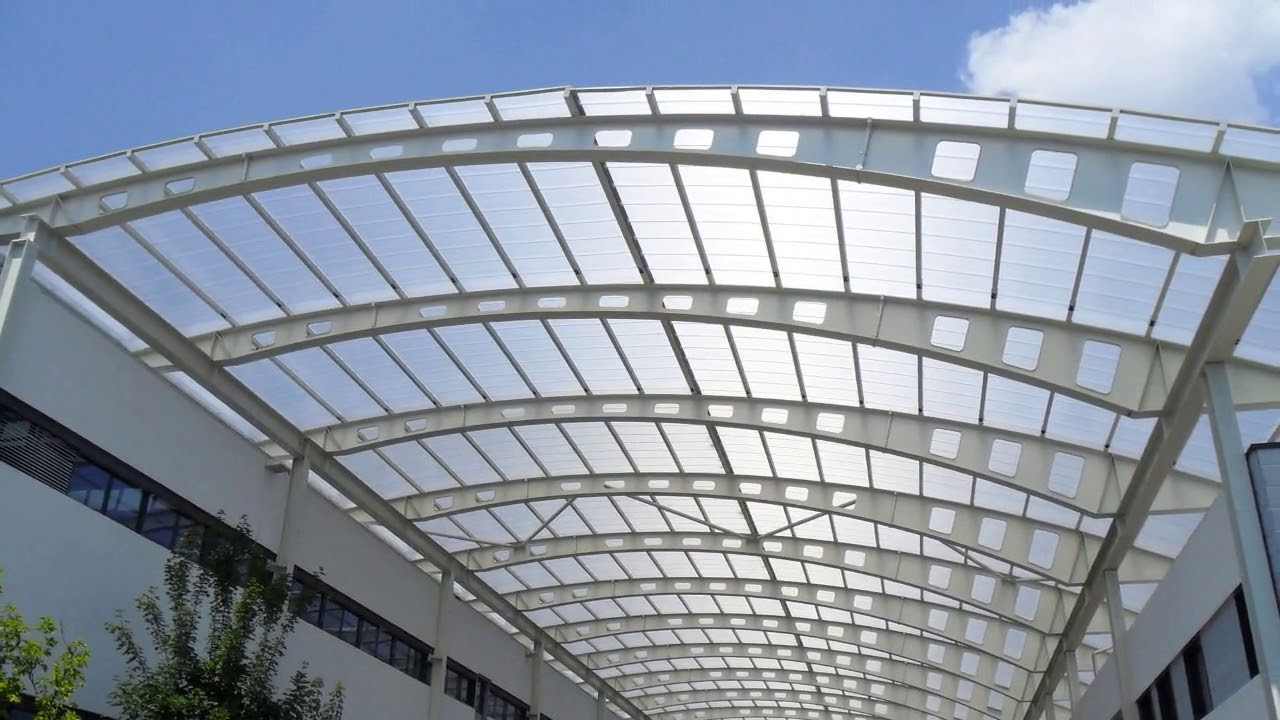Exploring Standing Seam Roofs & Eco-Friendly Driveway Materials:
Standing Seam Roofs:
As sustainability and durability become top priorities in modern construction, two areas are attracting significant attention: standing seam metal roofing and eco-friendly driveway materials. Both offer long-term performance, aesthetic appeal, and environmental benefits.
Standing Seam Metal Roofs
What Is a Standing Seam Roof?
Standing Seam Roofs consist of interlocking metal panels—typically steel, aluminum, or zinc—joined by raised vertical seams. These seams “stand” above the level of the roofing panel, hiding fasteners beneath, for a sleek, watertight finish.
Key Advantages
Weather Resistance:
Raised seams and concealed clips create a continuous, leak-resistant barrier against rain, snow, and wind.
Low Maintenance:
Smooth metal surfaces shed debris and require only occasional cleaning.
Energy Efficiency:
Reflective metal finishes reduce solar heat gain, lowering cooling costs in warm climates.
Aesthetic Versatility:
Available in a wide range of colours and finishes—from matte to metallic—standing seam roofs suit both modern and traditional architecture.
Environmental Benefits
Recyclability:
Metal roofing is often made from recycled content and is fully recyclable at the end of its life.
Cool Roofing:
Reflective coatings help mitigate the urban heat island effect by bouncing sunlight away.
Lightweight Installation:
Reduced structural load means less material used in framing.
Considerations Before Installation
Up‑Front Cost:
The initial investment is higher than that of conventional roofing, but it is offset over time by the durability and energy savings.
Professional Installation:
Proper seaming and flashing detail is critical—choose installers experienced with metal roofing.
Thermal Movement:
Allowance for metal expansion and contraction must be incorporated into the design to prevent noise or buckling.
Eco-Friendly Driveway Materials
Why Go Eco-Friendly?
Traditional concrete and asphalt driveways create impermeable surfaces that contribute to stormwater runoff, heat buildup, and CO₂ emissions. Eco-friendly alternatives address these issues while still delivering functionality and curb appeal.

Environmental Advantages
Stormwater Management:
Permeable surfaces allow rainwater to soak into the ground, replenishing aquifers and reducing flood risk.
Reduced Runoff Pollution:
Filtering rainwater through gravel or resin removes pollutants before they reach storm drains.
Sustainable Sourcing:
Many eco-friendly driveway materials utilize recycled aggregates or low-energy manufacturing processes.
Design and Installation Tips
Proper Base Preparation:
A well-graded sub-base with appropriate stone layers ensures stability and permeability.
Edge Restraints:
Use concrete or steel edging to prevent pavers or gravel from spreading over time.
Maintenance Plan:
While permeable systems require less maintenance than asphalt, periodic sweeping or pressure washing helps keep pores clear.
Load Considerations:
Ensure your chosen material can handle the vehicle’s weight—grass pavers and gravel grids are ideal for occasional or light vehicle use. In contrast, resin-bonded or porous asphalt is suited for heavier traffic.
Integrating Both Solutions
Combining a standing seam roof and an eco-friendly driveway can create a cohesive, green design strategy for residential or commercial properties:
Unified Aesthetic:
Metal roofing’s sleek lines and modern colours pair well with clean, patterned permeable pavers.
Water Harvesting:
Direct rainfall from the metal roof into rain gardens or gravel trenches within the driveway to promote groundwater recharge.
Energy and Water Savings:
Reflective roofing reduces interior cooling loads, while permeable driveways cut stormwater fees and flood risks.
Main Uses of Standing Seam Roofs and Eco-Friendly Driveway Materials:
Standing seam roofs are widely used in both residential and commercial buildings for their durability, sleek appearance, and excellent weather resistance. They are ideal for modern homes, industrial facilities, and eco-conscious designs due to their energy efficiency and recyclability.
Main Uses of Polycarbonate Roofing:
Polycarbonate roofing is widely used for its lightweight, durable, and UV-resistant properties. It’s commonly installed in greenhouses, carports, pergolas, conservatories, and skylights due to its ability to transmit natural light while blocking harmful UV rays. Its impact resistance makes it ideal for areas prone to harsh weather, such as industrial warehouses or outdoor shelters. In commercial settings, it is often used for awnings, walkways, and translucent roofing panels. Easy to install and maintain, polycarbonate roofing is also a popular choice for DIY home improvement projects. Its versatility and cost-effectiveness make it a go-to option for both residential and commercial applications.
Conclusion:
Standing seam metal roofs and eco-friendly driveway materials, each offer longevity, low maintenance, and environmental advantages. While the initial costs may exceed those of traditional alternatives, the long-term benefits, including energy savings, improved stormwater management, and reduced environmental impact, make them a worthwhile investment. By carefully planning material selection, professional installation, and ongoing maintenance, you can create a property that’s both sustainable and stylish for decades to come.
Ready to modernise your home or commercial property?
Consult with experienced roofing and landscaping professionals to explore specific product options, design layouts, and detailed cost estimates. Your journey to a greener, more durable exterior starts here.




Leave a Reply
Want to join the discussion?Feel free to contribute!